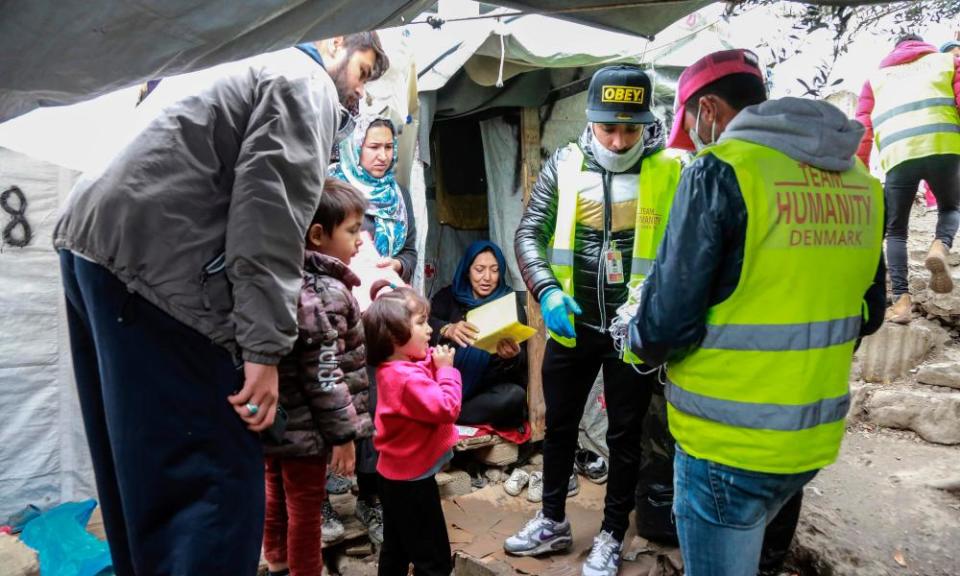Coronavirus pushes us to protect the vulnerable. The real test is what happens next

Pandemics force societies to take a hard look at themselves. With many countries beginning to lift lockdown, we’ve arrived at another one of those mirror moments: whether we experience a second wave of coronavirus infections depends in large part on the health status of some of the most vulnerable groups in society.
In deciding whether or not to lift lockdown, the first and most important question a government has to answer is whether the rate of new infections is slowing – and doing so in a sustained way. The critical determinant here is the basic reproduction number, R0, which is the average number of people each infected person passes the virus on to in a population where everyone is susceptible. If R0 is above one, the epidemic is growing, and if it’s below one, it’s shrinking.
In the UK, the lockdown has brought R0 down significantly – possibly even to below one. But modellers can’t be sure about that, because the number of new Covid-19 cases is still climbing – suggesting either that there has been a delay in the reporting of those cases or that the UK epidemic is in fact still growing. “I am not sure of the exact value of R0 at the moment in the UK,” Jasmina Panovska-Griffiths, a modeller at University College London, told me on 27 April.
Even if the modellers knew what the UK’s R0 was the number is just an indicator. How well it reflects reality depends on how well you’re sampling your population for the virus and how reliable your tests are. More importantly, perhaps, the R0 is an average. It tells you nothing about variability across a population, and critically, it’s silent about pockets of high disease prevalence in that population. If there are places where Covid-19 is spreading fast then once the lockdown is lifted – even a little – it could roar back out of those places, seeding a second wave in a still-susceptible population before a vaccine becomes available.
We know care homes for older people represent such a pocket, but others could include prisons, where there is no alternative to confinement; and Europe’s migrant camps, whose inhabitants in many cases suffer the worst of both worlds – less than optimal shelter, and restrictions on their movement.
If the conditions in which these and other vulnerable groups, such as homeless people, live make it difficult or even impossible for them to avoid infection – and to get appropriate medical care when sick – then they will suffer; but so, potentially, will the rest of us.
Winston Churchill observed that a society’s attitude to those who commit crimes is the measure of “the stored-up strength of a nation”. A pandemic has the potential to turn that message on its head: a society’s attitude to its prisoners – and homeless people, and asylum seekers – is a measure of its stored-up weaknesses.
A growing number of prisoners are older people – a trend that has tracked the ageing of the general population – and older people are, of course, at heightened risk of contracting Covid-19. But prisons are also often overcrowded, making isolation, quarantine and social distancing difficult to implement.
Both inmates and prison personnel are understandably afraid of the prospect of infection penetrating their facilities – especially if the former feel they have been placed in danger through practices such as cohorting, where prisoners with coronavirus-like symptoms (but who haven’t been tested) are made to share cells with others who have tested positive for Covid-19. Several countries have already had riots in prisons and escapes during this pandemic.
The crowded and unsanitary migrant camps in Greece, meanwhile, could be Europe’s achilles heel. Greece has controlled the outbreak efficiently to date, mainly thanks to its government’s quick response. It was already blitzing its population with Covid-19-related public-health messages in January – before Europe recorded its first case of the disease. It reacted to its own first cases with intensive contact-tracing and testing, and used the time this bought to build hospital and lab-testing capacity.
But migrant camps in Greece recorded a spike in cases days before the government planned to ease lockdown restrictions. And though the government has said it intends to integrate the camps into its national Covid-19 strategy, it has yet to be properly implemented there.
Globally, the approach to homeless people has varied widely. In the US, California moved quickly to house its homeless population in vacant hotel rooms – a plan the UK and France have been implementing too – while in Las Vegas, white rectangles were painted on a car park, apparently as a guide to hunkering down in a socially distanced way (the city has since erected temporary isolation units in the same car park).
Attempts to model the pandemic in England’s homeless population have suggested that, without any intervention, up to three-quarters of them could become infected. Those who fall sick may need medical care, but we don’t yet know what proportion of any population becomes infected without experiencing symptoms. Very approximately, since exact numbers of homeless people are hard to come by, thousands of people sleeping rough in England could be unaware they are infected – and infectious. That’s not so much a pocket as a seam.
As in so many other areas of life, the pandemic is prompting action on social problems where there was inertia before. It would be naive to assume any temporary solutions will be extended beyond the end of this crisis, but they may at least stimulate debate about what should be put in their place. Protecting these vulnerable populations only when doing so protects the rest of us can’t fit many people’s definition of a civilised society.
• Laura Spinney is a science journalist, novelist and author

 Yahoo Sports
Yahoo Sports 